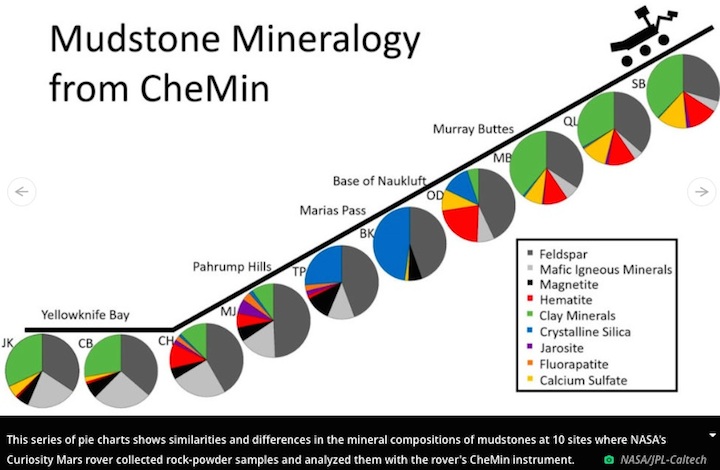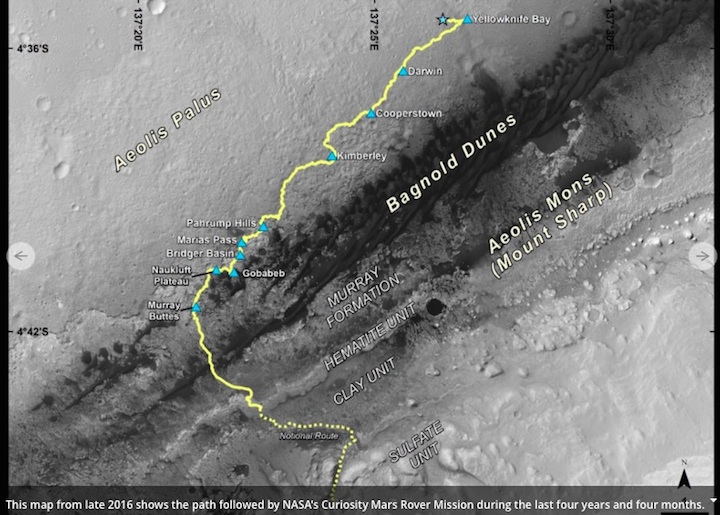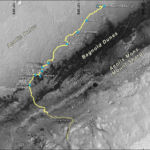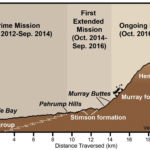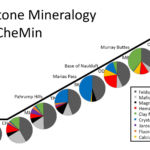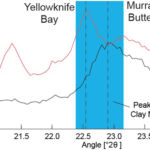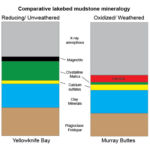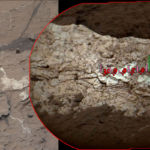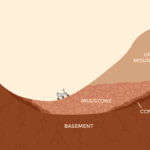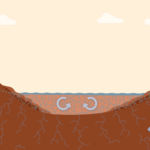Curiosity has been on the surface of Mars for more than four years and has covered roughly 15km of the red planet. In that time, the rover has drilled into and analyzed countless rocks to learn more about the planet’s mineralogy. According to Curiosity, Mars was once a wet world with much of the chemistry required for life.
The rover has also climbed about 200 vertical meters from the bottom of Gale Crater, near Yellowknife Bay, onto the lower slopes of Mount Sharp and into the Murray Buttes feature. Amid these travels, Curiosity has revealed the changing composition of the clays and rocks. For example, scientists working with data collected by Curiosity announced on Tuesday they had recently found boron on Mars for the first time, an indicator of past habitability.
Additionally, Curiosity’s rich chemical analysis of Martian rocks is helping scientists understand the nature of the large lake that partially filled Gale Crater billions of years ago. They have found evidence of ancient streams and deltas that fed the lake. Based on sediments left behind, scientists have confirmed that the lake waters were not too acidic for life to have once existed.
Martian mineralogy
Scientists discussed their latest findings Tuesday during a news conference at the American Geophysical Union’s Fall Meeting, in San Francisco. As Curiosity has climbed the slopes of Mount Sharp, it has found an increased amount of certain clay minerals compared to older sedimentary layers examined earlier. From this, scientists have gleaned details about Mars’ climate billions of years ago and how it may have changed during the critical few hundreds of millions of years when water was abundant on the planet’s surface.
One of the ways scientists have reached this conclusion is through X-ray diffraction, which can identify minerals from their crystalline structure. At the lower elevations, Curiosity found more magnesium and reduced iron, whereas, higher up, the minerals include more aluminum and oxidized iron. These differences hint at the complex water chemistry of Mars in the past, said Thomas Bristow, a staff scientist at NASA’s Ames Research Center.
Further complicating these studies of ancient Martian chemistry is that minerals can form in place or be transported by water. Even with four years of data from present-day Mars, building a model of how water moved around on Mars three billion years ago is still a challenge.
“This puzzle makes my job fun,” Bristow said. “Fortunately, the picture is becoming more coherent as we ascend the mountain.”
A lovely lake
The scientists now believe that rivers brought sediment into Gale Crater about 3.5 billion years ago. Those rivers deposited pebbles higher up and sand in the center of the basin, where there was a standing body of water. As these sediments built up at the base of the crater, the lake level rose. From samples taken by Curiosity when it was in Yellowknife Bay, scientists were able to study the sandstone and mudstone that were buried by dust after the lake dried up.
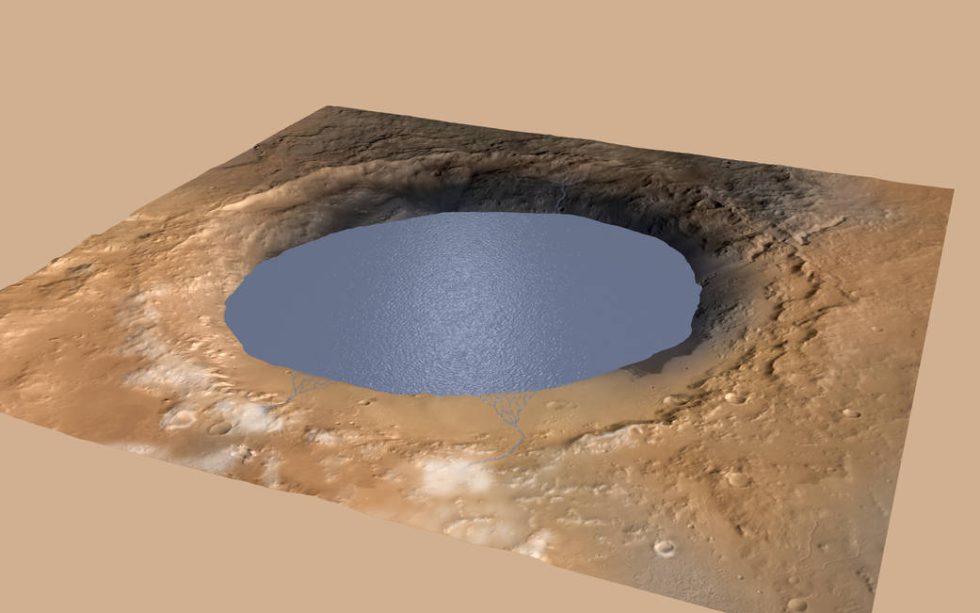
As they study these Martian clays, scientists and geologists must also account for the movement of a larger groundwater system, which would have remained moist long after the surface lake dissolved when the Martian atmosphere disappeared and the planet cooled. “Any microbes could have remained happy in those cracks for a long time,” said Curiosity scientist John Grotzinger, of the California Institute of Technology.
The intriguing new data has increased the confidence of Grotzinger and others of a temperate past for Mars. About 3.8 billion years ago, he said, as life formed on Earth, conditions on Mars would have been much the same. Snows on Martian peaks would have melted during the warm season, flowing as rivers down into basins such as Gale Crater. That water was not too acidic. “We see all of the properties in place that we like to associate with habitability,” he said. “There’s really nothing too extreme here.”
Finding boron is not boring
The finding of boron, for the first time on Mars, tantalized scientists as well. Curiosity’s ChemCam instrument has recently found the element in mineral veins. Boron makes up about one tenth of one percent of the rock’s composition.
Scientists have several ideas for why they’re finding the rare, highly water-soluble element on Mars. Boron indicates the presence of complex chemical processes playing out long ago within Mars’ rivers and lakes. These are not smoking guns for life—Curiosity has not found microbes or fossils—but more complex chemistry increases the odds that life arose on Mars. Additionally, some scientists think a certain form of boron is needed as part of a chemical reaction to create RNA. Sadly, Curiosity cannot discern differences in boron types.
With their latest observations on Mars, scientists have pushed the limits of Curiosity’s chemistry kit. Another rover similar in size and design to Curiosity, Mars 2020, should launch in July, 2020. It will have an ultraviolet Raman spectrometer and the capability to determine whether the boron on Mars is the mineral form thought to be part of the RNA reaction. Mars 2020 will also be able to detect organic compounds. So while Curiosity hasn’t found life, it has certainly succeeded in raising the curiosity of astrobiologists and left them wanting more data from the red planet.
Quelle: arstechnica


